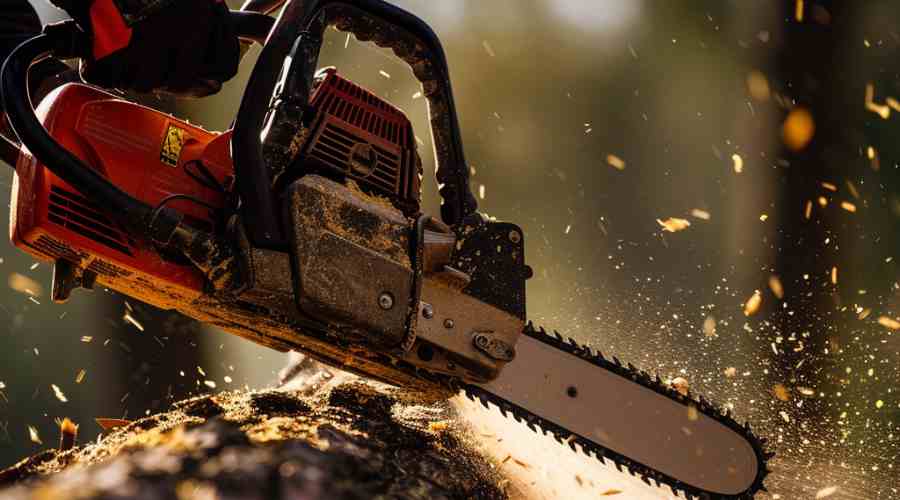DIY Tree Removal Tips
Think Twice Before Attempting DIY Tree Removal
Removing a tree, especially a large one, can seem like an impossible task for a homeowner to tackle. However, with the right preparation and tools, you may be surprised at what you can accomplish yourself. DIY removal can save money compared to hiring professional services.
However, it’s also easy to make dangerous and costly mistakes if you don’t know what you’re doing. By learning some safety tips and being aware of common errors to avoid ahead of time, your DIY tree removal has a much better chance of being successful.
Why Consider DIY Tree Removal
It may appeal to you for several reasons:
- Save Money – Professional tree removal services often charge hundreds or even thousands of dollars. Doing it yourself can potentially chop those costs significantly.
- Feeling of Accomplishment – Successfully tackling a major project like removing a tree yourself can be extremely rewarding.
- More Control – You don’t have to wait around for a tree company’s schedule and can work at your own pace.
However, before deciding to DIY, consider whether the type of tree, location, and your skill level make sense. Otherwise, you may end up with an even bigger problem.
When It’s Best to Call In the Professionals
Removing large, mature or trees in challenging locations should be left to professional removal companies. They have the expertise, equipment, and manpower to remove trees safely.
Consider calling in the pros for:
- Extremely large or tall trees
- Old trees with decay or disease
- Trees leaning over your house or electrical wires
- Trees near roads, sidewalks, or structures
- Tree removal requiring climbing or aerial access
If you are uncomfortable with any part of the removal or feel it is beyond your skill level, contact a professional tree service. Paying for expert tree removal is far less expensive than a trip to the hospital!
Assess the Site and Prepare for Removal
Before starting, you need to carefully survey the area and make some preparations.
- Examine how and where branches grow to plan your method and escape routes
- Clear out any brush and smaller trees around the base
- Check for power lines or other utilities and call to have them deactivated if necessary
- Setup safety barriers around your work zone to protect property
- Have tools and protective equipment ready to go
Rushing into cutting down a mature tree without proper planning will likely end in disaster. Spend adequate time on this step to understand potential hazards and map out the removal.
Pro Tip: Even if you have healthy trees, always check for dead branches and twigs extending higher than you can safely reach before attempting DIY removal. Dead trees can fall unexpectedly and cause personal injury. And remember to use proper guards and positioning with wood chippers when feeding material to avoid harm. You may still need to hire a professional arborist for stump grinding if you can’t handle the tallest branches or your tree was unhealthy to begin with. Stay safe!
Essential Tools for DIY Tree Removal
Taking down a backyard tree is an extremely labor intensive process. Having the proper safety gear and tree cutting tools is critical.
Tools you should have on hand include:
- Chainsaw appropriate for the job (electric or gas-powered)
- Wedges and a sledgehammer
- Hearing protection like earmuffs
- Safety glasses for eye protection
- Dust mask
- Hard hat
- Work gloves
- Ropes
- Straps or slings
Never attempt using a chainsaw or swinging an axe while on a ladder or in a tree! Along with tools to cut the tree, focus on equipment to carefully control its fall and safely lower cut pieces.
10 Key Steps for DIY Tree Removal
Once your preparations are complete, you’re ready to start cutting. Follow these key steps closely for safe do-it-yourself tree removal:
1. Clear the Area
Ensure people, vehicles, and pets are completely clear of the work area.
2. Evaluate Leaning Direction
Note which direction the tree is leaning naturally and plan your cuts accordingly.
3. Choose Escape Routes
Establish at least two escape routes away from the expected falling zone.
4. Make Relief Cuts
Cut notch on the side the tree should fall to help control descent.
5. Cut Felling Notch
Make horizontal cut above initial notch to guide direction.
6. Use Wedges
Place wedges in felling notch to further control tree’s descent.
7. Retreat and Holler “Timber!”
Alert anyone in vicinity the tree is coming down.
8. Cut Base Notch
Saw deeply into inner base of tree’s notch until it begins falling.
9. Retreat along Escape Route
Quickly but carefully move away along your planned path.
10. Section and Remove Debris
Once tree is on ground, cut trunk and branches into movable pieces.
Remember, this is merely a basic overview of steps, not comprehensive instruction. First-timers should seek additional guidance from tree care experts before attempting.
Common Mistakes to Avoid
While the right preparation and proper tools are key to DIY success, avoiding common mistakes homeowners make is equally as important. Keep these tips in mind:
- Don’t leave stubs – Stubs left on falling trees can fling back unpredictably as it comes down. Always cut flush with the tree stump.
- Avoid using ladders – Ladders seem like an obvious device for DIY, but they are extremely dangerous. Stay on the ground level while operating a chainsaw.
- Wear safety equipment – You must wear rugged boots, hearing protection, helmet, safety goggles and other protective gear when felling trees.
- Check for inside decay – Use an axe to chop into the tree and make sure there is no extensive interior rot or holes that would make felling more unpredictable.
- Misjudging lean direction – Analyze multiple times from different angles which way the top of the tree truly leans before starting cuts.
- Overestimating your abilities – Be extremely conservative in assessing what you can handle yourself. Getting in over your head puts your safety at risk.
Laws Around Trees and Permits Required
Most areas have laws prohibiting tampering with or removing entire trees on public property without permission. And even cutting trees on your private property may require permits in advance for some municipalities or neighborhoods.
Be sure you understand the legal requirements for the following:
- Zoning regulations for tree removal
- Permits to remove street trees
- Heritage tree status that protects certain species
- Local tree protection ordinances
Removing trees illegally can result in significant fines on top of potential damage costs. Do your homework first!
Conclusion
While DIY tree removal is an ambitious task, it can certainly be done safely by an attentive and careful homeowner. However, you must honestly evaluate your skill level, research proper techniques, use appropriate safety measures, and avoid common errors. Otherwise, the inherent dangers of felling trees yourself can have severe consequences including property damage, bodily harm, and legal penalties. Weigh all these considerations before starting any DIY tree removal project.



